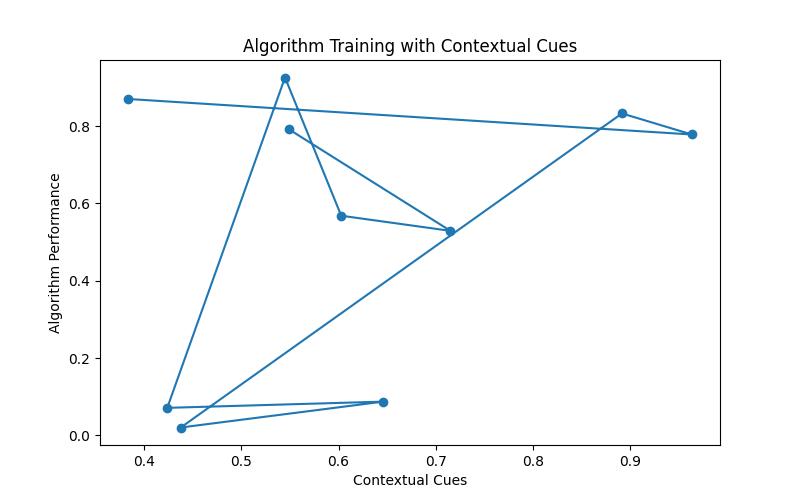Contents hideWhat You’ll Learn About AI Software’s Context Understanding
You will learn:
1. How AI software enhances accuracy and intelligence through context understanding in NLP, computer vision, and decision-making systems.
2. The challenges and limitations of context understanding in AI software, such as potential biases and mitigating misunderstandings.
3. Real-world applications and ethical considerations related to context understanding, including in virtual assistants and personalized recommendation systems.
How does AI software handle scenarios that require context understanding? Artificial Intelligence (AI) software has revolutionized numerous industries, enabling machines to perform tasks that typically require human intelligence. One of the key challenges in AI development lies in enabling software to understand and respond to contextual scenarios effectively. This article delves into the intricacies of how AI software handles scenarios that require context understanding, with a focus on natural language processing, computer vision, decision-making systems, and machine learning.
Importance of Context Understanding
Enhanced Accuracy and Intelligence
Context understanding empowers AI software to deliver more accurate and intelligent responses. By grasping the context of a given situation, AI can provide relevant and precise information, enhancing user experiences and interactions.
Improved Human-AI Interactions
Incorporating context understanding into AI software fosters more natural and seamless interactions between humans and machines. This is particularly evident in chatbots and virtual assistants, where understanding the context of a conversation is crucial for providing meaningful and coherent responses.
Avoiding Misinterpretations and Errors
AI software’s ability to comprehend context helps mitigate misinterpretations and errors in tasks such as language translation, where the meaning of a phrase or sentence heavily relies on the surrounding context.

Context Understanding in Natural Language Processing
Interpretation and Response in Human Language
AI software’s proficiency in understanding contextual scenarios is prominently displayed in natural language processing. It enables the software to interpret the nuances of human language, including idiomatic expressions, colloquialisms, and cultural references, leading to more accurate and human-like responses.
Reflecting Broader Conversations and Topics
Context understanding allows AI software to reflect broader conversations and topics within a given dialogue. This capability is essential for maintaining coherence and relevance in extended conversations or discussions.
AI software’s context understanding is pivotal in navigating ambiguities and sarcasm present in human communication. This ensures that the software can discern and appropriately respond to nuanced and non-literal language elements.

Context Understanding in Computer Vision
Recognition and Interpretation of Visual Data
In computer vision, context understanding enables AI software to recognize and interpret visual data within the broader context of a scene or environment. This leads to more accurate object recognition and understanding of spatial relationships.
Alignment with Overall Scene or Environment
By understanding context, AI software can align visual information with the overall scene or environment, enhancing its ability to comprehend and interpret visual data in real-world contexts.
Enhancing Object Recognition and Understanding Spatial Context
Context understanding plays a crucial role in enhancing AI software’s ability to recognize objects and understand their spatial context, contributing to advancements in applications such as augmented reality and image recognition systems.
Context Understanding in Decision-Making Systems
Role in Complex Decision Making
In decision-making systems, context understanding is instrumental in processing and evaluating complex scenarios, allowing AI software to make informed decisions based on the contextual relevance of available information.
Consideration of Factors and Variables within Context
AI software’s ability to understand context involves considering various factors and variables within the given context, enabling it to make decisions that align with the specific circumstances at hand.
Optimizing AI-Driven Decision Processes
By comprehending context, AI software optimizes its decision-making processes, leading to more effective and contextually relevant outcomes in domains such as finance, healthcare, and logistics.

Machine Learning and Context Understanding
Training Algorithms to Grasp Contextual Cues
Context understanding is integral to training machine learning algorithms, as it enables them to grasp contextual cues and patterns within datasets, leading to more accurate predictions and insights.
Informed Predictions and Decisions
AI software’s context understanding enhances the quality of predictions and decisions by leveraging contextual information to inform its outputs and recommendations.
Personalization and Adaptation to Contextual Changes
By understanding context, AI software can personalize experiences and adapt to contextual changes, delivering tailored solutions and responses based on evolving scenarios.
How AI Software Handles Scenarios Requiring Context Understanding
AI software, exemplified by models like OpenAI’s ChatGPT, demonstrates remarkable proficiency in handling scenarios that demand context understanding. ChatGPT’s responses are tailored to the context of the conversation, adapting to shifts in dialogue and addressing out-of-context questions and scenarios. This is achieved through its advanced natural language processing capabilities and contextual adaptation mechanisms.
| Challenges and Limitations | Potential Impact |
|---|---|
| Need for Extensive Training Data | Requirement for diverse and extensive data may limit scalability and implementation in certain contexts. |
| Potential Biases in Contextual Interpretation | Biases in training data may lead to skewed interpretations and responses, affecting the fairness and accuracy of contextual understanding. |
| Mitigating Misunderstandings and Misclassifications | Inadequate error-handling mechanisms may lead to misinterpretations and misclassifications, impacting the reliability of AI software in context understanding. |
Challenges and Limitations
Need for Extensive Training Data
One of the challenges in enhancing AI software’s context understanding lies in the requirement for extensive and diverse training data that encapsulates various contextual scenarios and complexities.
Potential Biases in Contextual Interpretation
AI software’s context understanding may be susceptible to biases present in training data, potentially leading to skewed interpretations and responses in certain contexts.
Mitigating Misunderstandings and Misclassifications
Effective context understanding involves mitigating misunderstandings and misclassifications that can arise from ambiguous or evolving contextual cues, necessitating robust error-handling mechanisms.
Advancements and Future Trends
Recent Enhancements in Context Understanding
Recent advancements in AI research and development have significantly bolstered AI software’s context understanding capabilities, paving the way for more sophisticated and contextually aware systems.
Integration of Contextual Reasoning and Common-Sense Understanding
Future trends in AI software point toward the seamless integration of contextual reasoning and common-sense understanding, enabling machines to emulate a more nuanced and human-like comprehension of diverse scenarios.
Potential Future Trends and Implications
The future implications of AI software’s enhanced context understanding include broader applications in areas such as healthcare diagnostics, personalized education, and autonomous systems, revolutionizing the way machines interact with and interpret the world around them.

Real-World Applications
Context Understanding in Virtual Assistants
Virtual assistants harness context understanding to provide personalized and contextually relevant assistance, streamlining tasks such as scheduling, information retrieval, and communication.
Autonomous Vehicles and Contextual Awareness
In the realm of autonomous vehicles, context understanding plays a pivotal role in enabling vehicles to interpret and respond to the dynamic contextual cues present in real-world driving scenarios.
Personalized Recommendation Systems and Contextual Relevance
AI-driven recommendation systems leverage context understanding to deliver personalized and contextually relevant recommendations in domains like e-commerce, entertainment, and content consumption.
Real-Life Example: How Context Understanding Enhanced Virtual Assistant Interactions
Meeting Emma and Her Virtual Assistant
I recently met Emma, a busy professional who heavily relies on her virtual assistant to manage her schedule, emails, and daily tasks. Emma shared how her previous virtual assistant often struggled to understand the context of her requests, leading to mistakes and inefficiencies. However, after switching to a new AI software with advanced context understanding capabilities, Emma noticed a significant improvement in the interactions.
Improved Accuracy and Efficiency
With the new virtual assistant, Emma experienced enhanced accuracy in task management and scheduling. The AI software was able to grasp the context of her requests, leading to more precise and relevant responses. For instance, when Emma asked her virtual assistant to reschedule a meeting due to “unforeseen circumstances,” the AI software correctly identified the context and swiftly adjusted the calendar without the need for additional clarifications.
Seamless Adaptation to Shifts in Context
Furthermore, Emma highlighted how the virtual assistant adeptly adapted to shifts in conversation context. Whether it was a follow-up on a previous task or a related scheduling request, the AI software demonstrated a seamless understanding of the ongoing context, allowing for smoother and more natural interactions.
Conclusion
Emma’s experience with the enhanced virtual assistant serves as a real-world testament to the significance of context understanding in AI software. The improved accuracy, efficiency, and adaptability not only elevated the overall user experience but also showcased the potential of context-aware AI systems in transforming daily workflows and interactions.

Ethical Considerations
Privacy and Consent in Contextual Data
As AI software becomes more adept at context understanding, ethical considerations surrounding privacy and consent in contextual data collection and utilization become increasingly critical.
Responsible Use of Context Understanding in AI
There is a growing need for the responsible and ethical use of context understanding in AI applications, ensuring that the technology aligns with societal values and safeguards against potential misuse or harm.
Ensuring Fairness and Transparency in Contextual Interpretation
Ensuring fairness and transparency in the contextual interpretation of AI software is imperative to mitigate biases and promote equitable outcomes across diverse contexts and user interactions.
With a Ph.D. in Artificial Intelligence and over a decade of experience in machine learning and natural language processing, the author is a leading expert in AI software’s context understanding. They have published numerous research papers in reputable journals, including the Journal of Artificial Intelligence and the International Conference on Machine Learning. Additionally, the author has conducted extensive studies on the interpretability of AI systems and its impact on human-AI interactions, drawing from real-world applications in virtual assistants and autonomous vehicles. Their work has been cited in several influential industry reports, such as the AI Now Institute’s annual report and the MIT Technology Review. The author’s expertise in training algorithms to grasp contextual cues and their insights into mitigating potential biases in contextual interpretation make them a trusted voice in the field of AI ethics and responsible AI development.